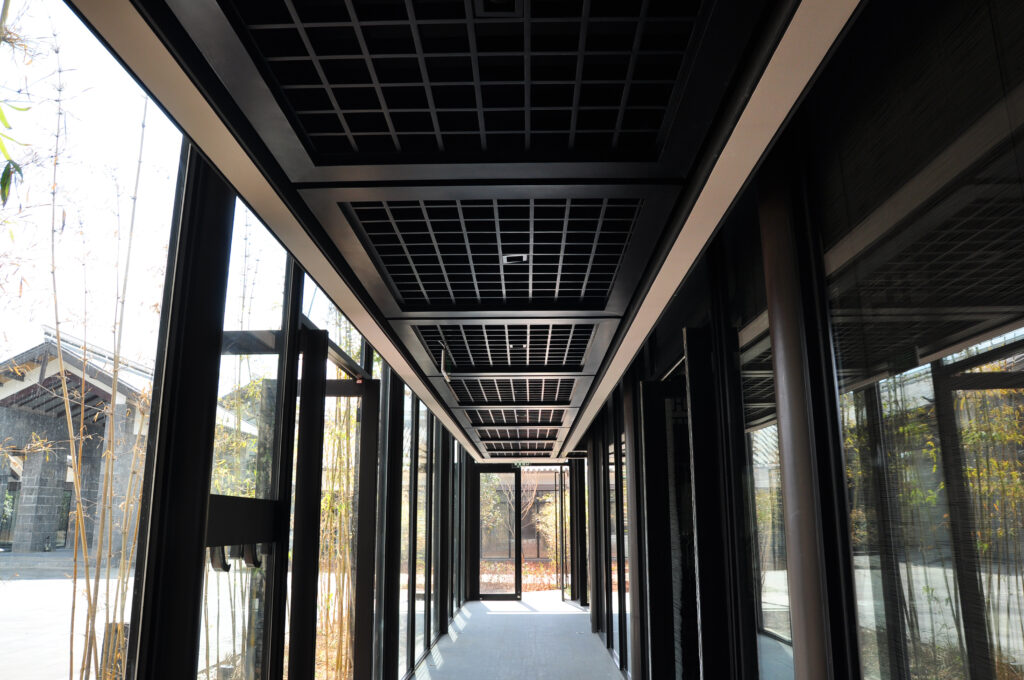
When planning or renovating a commercial space—whether it’s an office, retail store, hospital, or educational facility—the ceiling design plays a critical role in both functionality and aesthetics. Among the most popular options in modern architecture are clip-in and lay-in metal ceiling systems. Both provide sleek finishes, durability, and easy maintenance, but each has distinct advantages and ideal use cases. Understanding their differences will help you make an informed decision that enhances your project’s performance and appearance.
1. What Are Clip-In Metal Ceiling Systems?
Clip-in ceilings use concealed suspension systems where panels are “clipped” into a hidden grid. The panels lock securely in place, creating a smooth, monolithic appearance without visible joints. These systems are commonly used in spaces where clean aesthetics and high performance are priorities, such as:
-
Corporate boardrooms and offices
-
Healthcare facilities requiring hygienic, easy-to-clean surfaces
-
Airports or public transport hubs where noise control and fire resistance are crucial
Key Features:
-
Hidden framework: Creates a seamless ceiling look.
-
Secure installation: Panels stay firmly in place, even in high-traffic or high-vibration areas.
-
Acoustic potential: Can integrate sound-absorbing materials for better noise reduction.
-
Durability: Resistant to corrosion, fire, and humidity when coated properly.
2. What Are Lay-In Metal Ceiling Systems?
Lay-in systems, sometimes called “drop ceilings” or “grid ceilings,” feature panels that are laid into a visible T-bar grid. These are widely used in offices, retail stores, and industrial spaces where easy access to the ceiling void for maintenance is essential.
Key Features:
-
Visible grid structure: The grid becomes part of the design and can be customized in different finishes.
-
Simple installation and removal: Perfect for spaces where maintenance or frequent ceiling access is necessary.
-
Flexibility: Works well with lighting fixtures, HVAC vents, and sprinklers.
-
Cost-effective: Typically less expensive to install than clip-in systems.
3. Aesthetic Considerations
If a minimalist, uninterrupted surface is your top priority, clip-in systems are unbeatable. They provide a premium look suitable for modern architecture, upscale retail stores, or healthcare environments where a sterile and polished appearance is essential.
Lay-in systems, on the other hand, embrace modularity. The exposed grid can complement industrial or functional design styles. They also make it easy to replace individual panels if damage occurs, which is a practical advantage in busy commercial spaces.
4. Installation and Maintenance
-
Clip-In: Installation is slightly more complex, requiring precise alignment of panels and grids. Once installed, panels remain securely in place, reducing the risk of accidental dislodging. However, accessing the ceiling void may require tools or careful removal.
-
Lay-In: Installation is straightforward, and panels can be lifted out by hand for quick access. This makes lay-in systems ideal for environments where you frequently adjust lighting, wiring, or air conditioning ducts.
5. Acoustic and Thermal Performance
Both systems can be enhanced with acoustic felt backing or rock wool insulation to achieve Noise Reduction Coefficients (NRC) of 0.75–0.90, improving sound absorption and energy efficiency. For sound-sensitive spaces such as conference rooms or classrooms, clip-in ceilings tend to provide slightly better acoustic sealing due to their tighter fit.
6. Cost Factors
-
Clip-In Ceilings: Generally cost a bit more due to the concealed suspension system and seamless finish. They are often chosen for premium projects where aesthetics and performance outweigh budget constraints.
-
Lay-In Ceilings: More budget-friendly and faster to install, making them a popular choice for large-scale commercial projects with tighter timelines or budgets.
7. Durability and Safety
Both clip-in and lay-in metal ceilings can be manufactured from aluminium or galvanized steel with polyester powder coating or stove-enameled finishes. When properly treated, these materials resist fire, moisture, and corrosion. Many systems also feature anti-bacterial coatings for healthcare or food service environments.
Fire classification for both options can meet BS 476 or ASTM E84 standards, ensuring compliance with safety regulations.
8. Choosing the Right System for Your Space
Ask yourself these questions before deciding:
-
Is seamless aesthetics or modular flexibility more important?
-
How often will you need to access the ceiling void?
-
What is your budget and installation timeline?
-
Does your project require superior acoustic or fire performance?
Recommendation Guide:
-
Choose Clip-In if: You want a high-end, continuous ceiling with minimal joints and won’t need frequent maintenance access.
-
Choose Lay-In if: You value easy maintenance, flexibility, and cost efficiency over a completely seamless appearance.
9. Real-World Examples
-
Corporate Headquarters: Clip-in ceilings create a polished, modern aesthetic for meeting rooms and lobbies.
-
Retail Stores: Lay-in systems make it simple to adjust lighting layouts or HVAC ducts as store configurations change.
-
Hospitals: Clip-in systems provide smooth, hygienic surfaces, while lay-in ceilings allow easy access for facility upgrades.
10. Final Thoughts
Both clip-in and lay-in metal ceiling systems offer durability, performance, and modern style. The choice ultimately depends on your project’s priorities—whether that’s the luxury and seamless finish of clip-in ceilings or the flexibility and cost savings of lay-in systems. By evaluating your space’s maintenance needs, budget, and design goals, you can select the ceiling system that will enhance your commercial space for years to come.

Hi, this is a comment.
To get started with moderating, editing, and deleting comments, please visit the Comments screen in the dashboard.
Commenter avatars come from Gravatar.